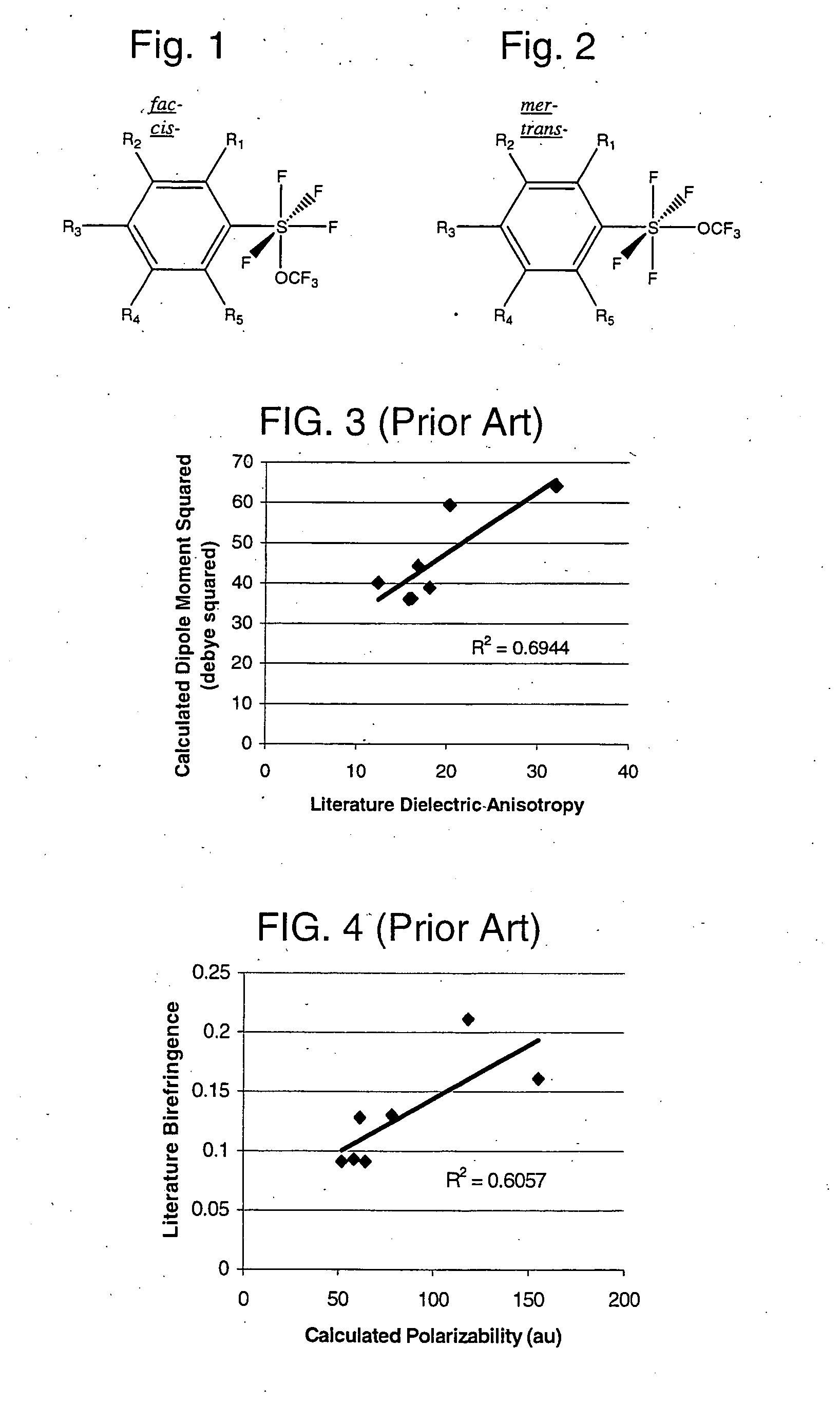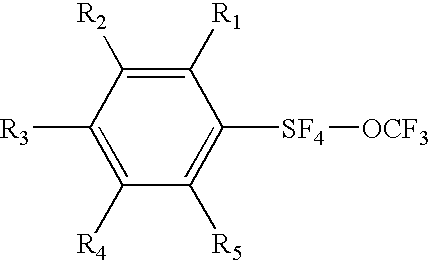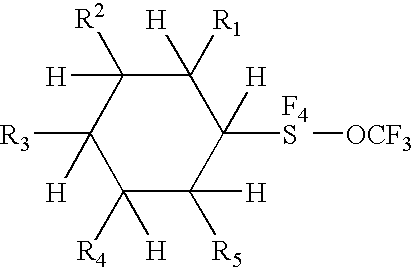Alkyl and aryl trifluoromethoxytetrafluorosulfuranes
a technology of trifluoromethoxytetrafluorosulfuranes and aryl trifluoromethoxytetrafluorosulfuranes, which is applied in the field of new compositions of matter, can solve the problems of dielectric anisotropies, fluorination having a negative effect on other properties of products, and a negative effect on fluorination
- Summary
- Abstract
- Description
- Claims
- Application Information
AI Technical Summary
Benefits of technology
Problems solved by technology
Method used
Image
Examples
example 1
4-Bromophenyl Disulfide
4-Bromobenzene thiol (25.0 g, 132 mmol) and methanol (250 mL, Fisher Scientific) were added to a 500 mL round bottom flask containing a Teflon coated stir bar. Excess elemental iodine (36 g, 140 mmol) was added in 2 g portions directly to the rapidly stirred thiol solution, precipitating the disulfide. The reaction was complete when the dark color of iodine persisted. The reaction mixture was added to 250 mL of water, which was then carefully neutralized with solid sodium bicarbonate then with sodium bisulfite, to neutralize any remaining I2. The resulting slurry was then extracted three times with 50 mL of methylene chloride; the organic layers were combined, dried over magnesium sulfate, and filtered. Removal of the solvent on a rotary evaporator revealed a light yellow solid, crude 4-bromophenyl disulfide (24.5 g, 98.7%). The disulfide was recrystallized from boiling methanol then fused under vacuum to remove any remaining solvent.
example 2
4-Bromophenyl (trifluoromethoxy) tetrafluorosulfurane
4-Bromophenyl disulfide (5 g, 13 mmol) was charged to an FEP tube reactor with acetonitrile (15 mL). At a total flow rate of 200 mL / min, a mixture of 8% CF3° F. in nitrogen was passed through the reactor contents at 25° C. until a total of 72 mmol (ca.) CF3° F. had been added. FTIR analysis of the effluent during the reaction indicated that not all of the CF3° F. had been consumed. While continuously adding CF3° F., the reactor was externally heated to 75° C. At this temperature, all of the solvent had been carried away in the effluent leaving only the substrate, a yellow liquid. After a total of about 300 mmol of CF3° F. had been passed through the reactor, the reactor was cooled to 20° C. The reactor contents were dissolved in pentane and neutralized with aqueous sodium bicarbonate. The aqueous layer was extracted 3 times with 10 mL portions of pentane and the organic layer was concentrated on a rotary evaporator revealing the...
PUM
| Property | Measurement | Unit |
|---|---|---|
| structure | aaaaa | aaaaa |
| dielectric anisotropy | aaaaa | aaaaa |
| optical birefringence | aaaaa | aaaaa |
Abstract
Description
Claims
Application Information
 Login to View More
Login to View More - R&D
- Intellectual Property
- Life Sciences
- Materials
- Tech Scout
- Unparalleled Data Quality
- Higher Quality Content
- 60% Fewer Hallucinations
Browse by: Latest US Patents, China's latest patents, Technical Efficacy Thesaurus, Application Domain, Technology Topic, Popular Technical Reports.
© 2025 PatSnap. All rights reserved.Legal|Privacy policy|Modern Slavery Act Transparency Statement|Sitemap|About US| Contact US: help@patsnap.com



